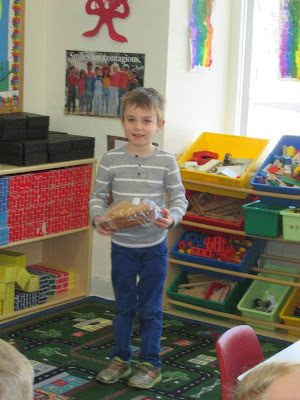This particular segment of technology for the classroom excited me. As part of our educational philosophy, peer teaching is high on the list. Establishing social connections and encouraging respect and care of each other at the beginning of the school year leads to learning through observation of those around us and learning through interactive play. The opportunity to utilize technology to enhance peer learning is fun AND beneficial for the students (and teachers). Simply using an iPad or iPhone video function provides opportunities for many types of tutorials. Currently, our young students participate in a public speaking opportunity or dramatic play at least once every two weeks, and the use of technology can increase these opportunities.
Some of our opportunities include:
History Share: Students bring in an item that has personal meaning to their family (traditional, cultural, or historical) and introduce it to the class. Students locate where the item comes from on the globe. Other students then follow up with questions or comments. As the week progresses, our globe has numerous stickers on the globe and typically leads to discussion regarding types of travel, distance, geography, and various cultures.
Calendar Helper: Students share the date, month, season, number of days in school, and weather.
Science Demos: Students teach each other about science and math concepts such as the butterfly life cycle, the many ways one can create a set of ten with Cuisenaire rods, and how to use ramps and pulleys.
My Life Show-and-Tell: Students share information from a recent trip or experience, introducing their peers to new concepts and places.
Any of these peer teaching opportunities can be filmed, and used for student tutorials, at home or in the classroom. In the History Share example above, one child brought in a dessert traditionally (see photo) made by his Swedish grandmother. The student had made the dessert with his grandmother for this assignment, yet could only bring the recipe and describe the experience. Had I have thought of utilizing technology, I could have suggested that the child video a portion of the cooking experience. Measuring, safe cooking practices, and hearing his grandmother's accent would have enhanced this tutorial for the students.
As with any new activity, our teachers will need to model the expectations and appropriate behavior for the new tool or activity. Responsive Classroom uses Interactive Modeling to demonstrate the expectation, ask students to share what they've noticed about the demonstration, and then model the appropriate behavior with the tool. Interactive Modeling would be used to demonstrate the proper use of an iPad or iPhone for videoing, but also for viewing, before it was included in a Science Center or other classroom lesson.
Due to the timing of this class, I do not have any students available to create a sample for me. For these purposes, you'll hear my voice in this is sample video. In a true classroom lesson, I suspect the video would be much longer.

No comments:
Post a Comment